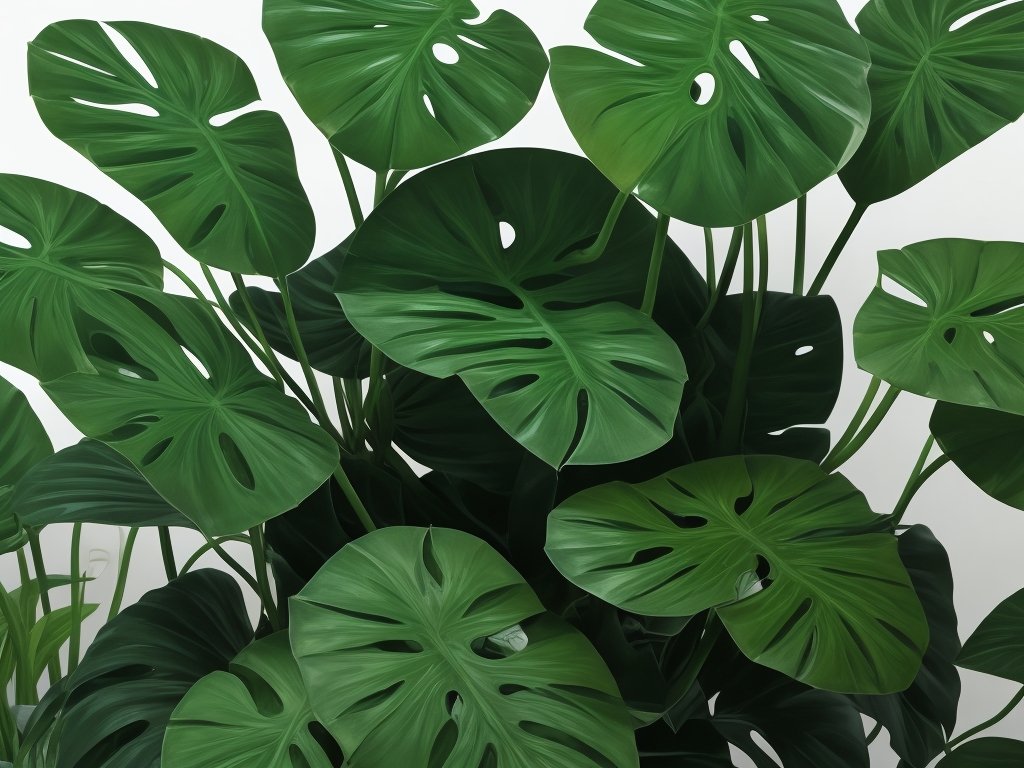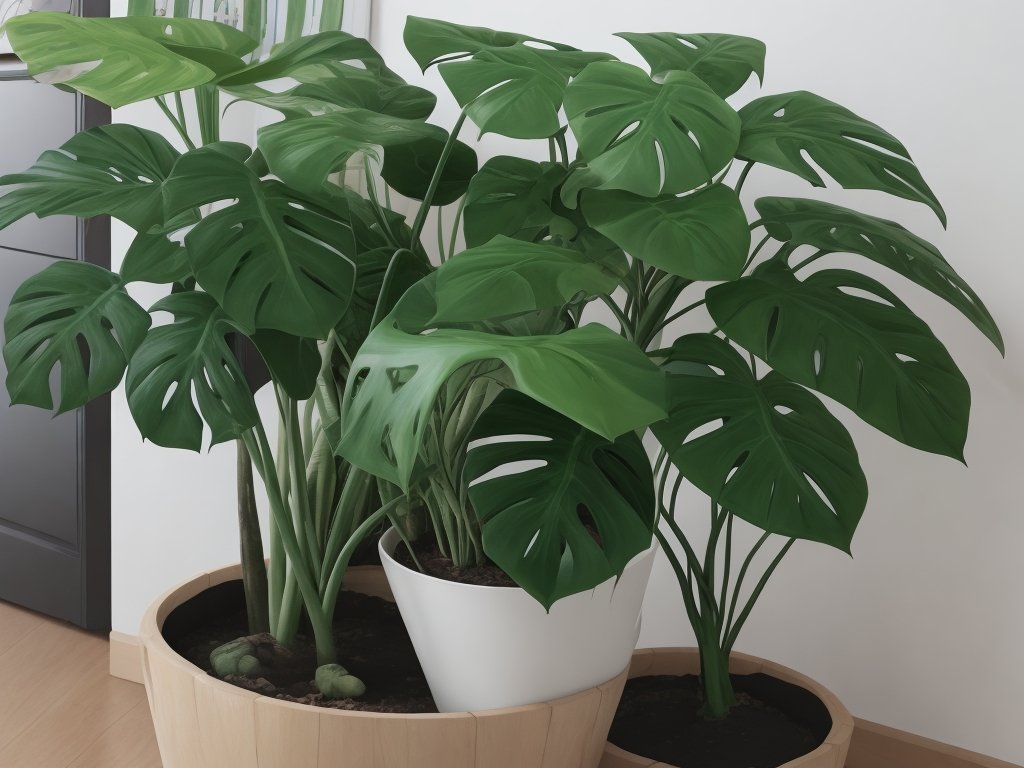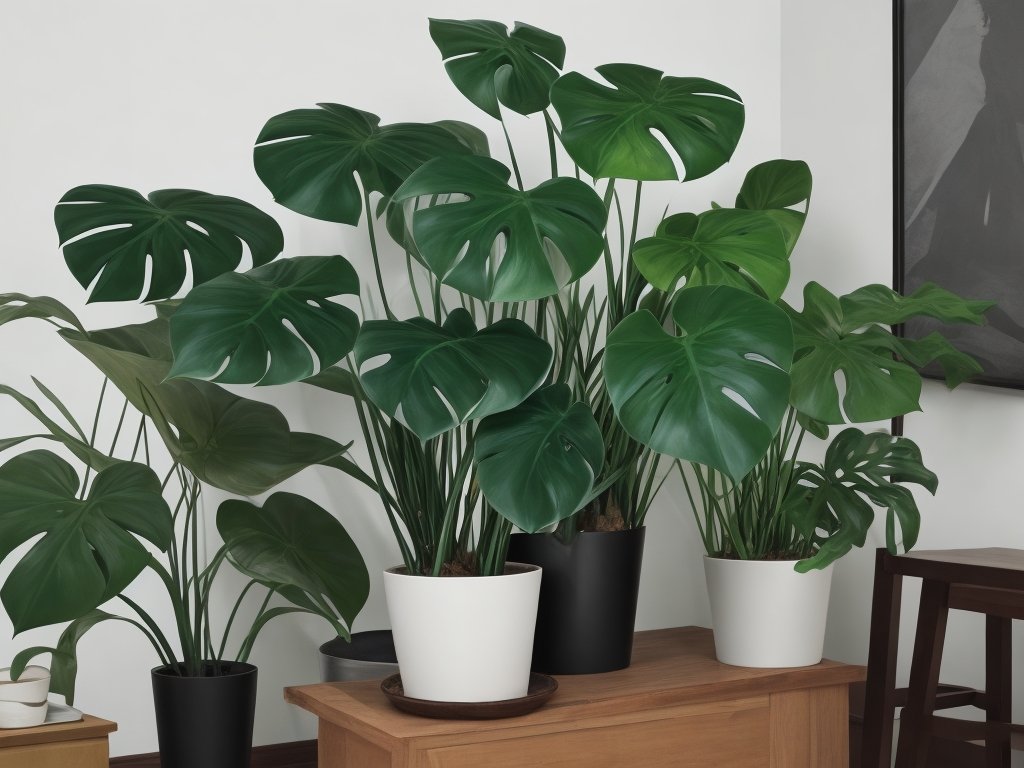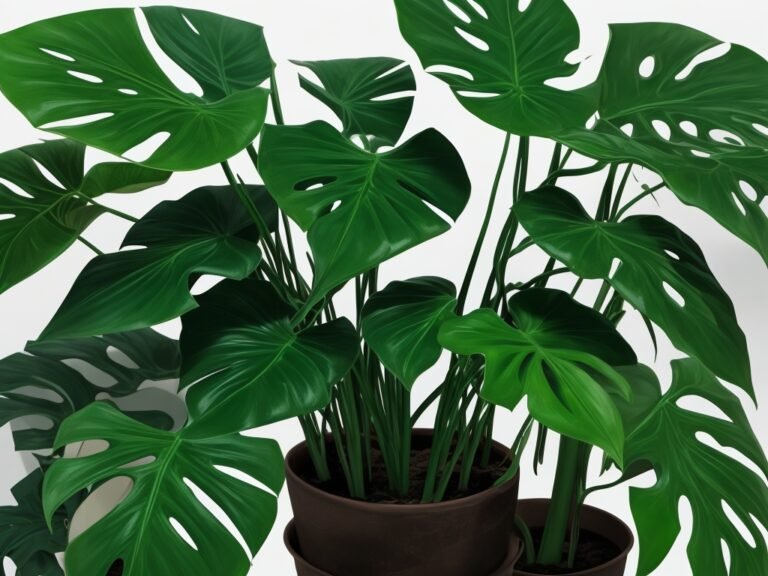How To Increase Humidity For a Monstera Plant?
Key Takeaways:
- Mist the leaves of your Monstera plant regularly to increase humidity.
- Place a tray of water near your Monstera plant to add moisture to the air.
- Use a humidifier to maintain ideal humidity levels for your Monstera plant.
- Group your Monstera plant with other plants to create a mini greenhouse effect and boost humidity.
Are you struggling to keep your Monstera plant thriving and healthy? Well, you’re not alone.
Many Monstera owners find it challenging to maintain the optimal humidity levels for their beloved plants.
But worry not! I’m here to share some valuable tips on how you can increase the humidity for your Monstera plant and create the perfect environment for its growth. From understanding the natural habitat of Monstera plants to using practical methods like misting, grouping, and creating humidity tents, I’ll guide you through all the steps.
Get ready to witness your Monstera flourish like never before!
| Methods | Description |
|---|---|
| Increase watering | This method involves watering your Monstera plant more frequently to increase the humidity level. Ensure that the soil doesn’t become waterlogged. |
| Mist the leaves | Use a spray bottle to mist the leaves of the Monstera plant regularly. This will help increase the humidity around the plant. |
| Place a tray of water | Put a tray filled with water near the Monstera plant. As the water evaporates, it will elevate the humidity level. |
| Group plants together | Cluster your Monstera plant with other plants. When grouped, plants create a microclimate that increases humidity for each other. |
| Use a humidifier | Invest in a humidifier to maintain a consistently high humidity level in the room where the Monstera plant is placed. |
Why is Humidity Important for Monstera Plants?
Humidity is important for Monstera plants because it mimics their natural rainforest environment and helps them thrive.
Understanding the natural habitat of Monstera plants
Monstera plants are native to the tropical rainforests of Central and South America. In their natural habitat, they thrive in humid environments with temperatures ranging from 70-85°F (21-29°C).
They grow as epiphytes, using nearby trees for support and climbing towards the sunlight.
The high humidity of their natural habitat is essential for their growth and overall health.
The impact of humidity on Monstera plant health
Humidity plays a significant role in the health of Monstera plants.
Insufficient humidity can lead to wilting leaves, brown edges, dry soil, slow growth, yellowing leaves, and leaf drop.
Adequate humidity levels promote healthy growth, prevent leaf problems, and ensure the overall well-being of your Monstera plant.

Signs of Low Humidity for Monstera Plants
Signs of low humidity for Monstera plants include wilting leaves and brown edges, dry soil and slow growth, and leaves turning yellow or falling off.
Wilting leaves and brown edges
Wilting leaves and brown edges on a Monstera plant are common signs of low humidity.
The lack of moisture in the air causes the plant to lose water faster than it can absorb.
This leads to dehydration, resulting in wilting leaves and brown edges.
Increasing humidity can help alleviate these issues and promote healthier foliage.

Dry soil and slow growth
Dry soil and slow growth are clear signs of low humidity for Monstera plants. When the air is dry, the soil dries out quickly, depriving the plant of essential moisture.
As a result, the plant’s growth slows down, and it may become stunted.
To address this issue, it’s crucial to increase humidity levels to promote healthy growth.

Leaves turning yellow or falling off
When the leaves of your Monstera plant start turning yellow or falling off, it is a sign of low humidity. The plant is not getting enough moisture in the air, causing stress and damage to the leaves.
Increasing humidity with methods like misting, using a humidifier, or placing the plant on a pebble tray can help alleviate this issue.
How to Increase Humidity for a Monstera Plant
To increase humidity for a Monstera plant, you can try grouping plants together or using a humidifier in the vicinity.
Grouping plants together
Grouping plants together is a great way to increase humidity for your Monstera plant.
When plants are grouped closely, they create a microclimate that traps moisture.
This helps to create a more humid environment for your Monstera.
Plus, it looks pretty too!
Using a humidifier in the vicinity
Using a humidifier in the vicinity of your Monstera plant is a great way to increase humidity levels. The humidifier releases moisture into the air, creating a more tropical environment for your plant.
Place the humidifier near the plant, but avoid direct contact to prevent water damage.
It’s an effective method to boost humidity and keep your Monstera happy and healthy.
Misting the leaves regularly
Misting the leaves regularly is a simple and effective way to increase humidity for your Monstera plant. Fill a spray bottle with water and mist the leaves a few times a week.
This helps to create a more humid environment, keeping your plant happy and healthy.
Placing the plant on a pebble tray
To increase humidity for your Monstera plant, you can place it on a pebble tray. Here’s how it works:
- Fill a tray or saucer with pebbles or stones.
- Add water to the tray, but make sure the water level is below the surface of the pebbles.
- Place your Monstera plant on top of the pebbles, ensuring that the pot is not directly in the water.
- As the water evaporates, it creates moisture around the plant, increasing humidity in its immediate environment.
Creating a humidity tent
To create a humidity tent for your Monstera plant, you can use a clear plastic bag or a transparent container to cover the plant. This traps moisture and creates a humid environment.
Ensure the tent is not touching the leaves, so you can remove any condensation.
Keep the tent in place for a few hours each day to increase humidity.
Other Ways to Improve Humidity for Monstera Plants
Here are some other ways to improve humidity for your Monstera plants:
- Using a humidifying tray or bowl
- Placing the plant in a naturally humid area of the house
Using a humidifying tray or bowl
A humidifying tray or bowl is a simple and effective way to increase humidity for your Monstera plant.
Fill the tray or bowl with water and place it near the plant.
As the water evaporates, it will raise the moisture level around the plant.
Make sure to keep the tray or bowl filled with water to maintain the desired humidity.
Using a water tray or fountain nearby
Using a water tray or fountain nearby is an effective way to increase humidity for your Monstera plant.
As the water in the tray or fountain evaporates, it adds moisture to the air surrounding the plant.
This helps to create a more humid environment, which is beneficial for the plant’s health and growth.
Make sure to regularly check and refill the water in the tray or fountain to maintain the desired humidity level.
Using a humidifying fogger or mister
To increase humidity for your Monstera plant, using a humidifying fogger or mister can be quite effective. These devices release a fine mist of water into the air, creating a moist environment for your plant.
Simply spray the mist around your plant a couple of times a day to boost humidity levels.
This method is convenient and ensures that your Monstera receives the moisture it needs to thrive.
Placing the plant in a naturally humid area of the house
Placing the plant in a naturally humid area of the house is a simple and effective way to increase humidity for your Monstera plant.
Find a spot in your home that naturally has higher humidity, such as a bathroom or near a kitchen sink.
These areas tend to have more moisture in the air, which will provide the ideal environment for your plant to thrive.
Additionally, you can also consider placing your Monstera plant in a room with a humidifier, as this will help maintain a consistent level of humidity for the plant.
Mistakes to Avoid When Increasing Humidity for Monstera Plants
Avoid overwatering, monitor the humidity levels, don’t rely solely on misting, and don’t ignore other plant care essentials.
Overwatering the plant
Overwatering a Monstera plant is a common mistake that can harm its health.
This is because excessive water can lead to root rot and create an environment for fungal diseases to thrive.
It’s crucial to allow the soil to dry out between waterings and only water when the top inch of soil is dry.
Avoid leaving the plant sitting in standing water to prevent overwatering.
Not monitoring the humidity levels
Not monitoring the humidity levels can be detrimental to your Monstera plant.
It’s important to keep an eye on humidity because low levels can lead to wilting leaves, browning edges, and slower growth.
High levels can cause yellowing leaves and leaf drop.
Don’t forget to regularly check and adjust humidity to ensure your plant’s health.
Relying solely on misting without other methods
Relying solely on misting without other methods may not be enough to increase humidity for a Monstera plant.
While misting can provide temporary relief, it evaporates quickly.
To effectively raise humidity, consider other methods like grouping plants together, using a humidifier, placing the plant on a pebble tray, or creating a humidity tent.
Ignoring other plant care essentials
Ignoring other plant care essentials can have a negative impact on the overall health and well-being of your Monstera plant.
Some key mistakes to avoid include overwatering, neglecting proper lighting conditions, failing to provide adequate nutrition, and not addressing pest infestations.
It’s important to prioritize these essential care practices alongside increasing humidity for optimal plant growth.
Frequently Asked Questions
Can I use tap water for misting or humidifying?
Yes, you can use tap water for misting or humidifying your Monstera plant.
However, it’s important to note that tap water might contain minerals or chemicals that could potentially harm your plant over time.
To minimize any potential damage, you can let the tap water sit uncovered for 24 hours, which allows some of the chlorine and other chemicals to evaporate.
Alternatively, you can use filtered or distilled water for misting or humidifying to ensure the best possible care for your Monstera plant.
How often should I mist my Monstera plant?
Mist your Monstera plant 2-3 times a week to increase humidity without overwatering. Make sure to mist the leaves lightly, focusing on the undersides where the stomata are located.
This will help mimic the natural humid environment that Monstera plants thrive in.
Can I use a humidifier at night when the temperature drops?
Yes, you can definitely use a humidifier at night when the temperature drops. In fact, it can be a great time to use a humidifier, as cooler temperatures often lead to lower humidity levels.
Running the humidifier at night can help maintain a comfortable and optimal humidity level for your Monstera plant while you sleep.
Just make sure to monitor the humidity levels and adjust the settings accordingly.
Are there other benefits of increasing humidity for Monstera plants?
Increasing humidity for Monstera plants not only promotes their overall health but also offers several other benefits.
It helps prevent the leaves from drying out and turning brown, keeps the soil moist, and supports healthy growth.
Additionally, higher humidity levels can reduce the risk of pests and diseases.
Final Verdict
Maintaining the right humidity levels is crucial for the health and vitality of your Monstera plant. By understanding its natural habitat and the impact of humidity on its well-being, you can identify signs of low humidity and take action to increase it.
Whether through grouping plants, using a humidifier, misting the leaves, or creating a humidity tent, there are various methods to improve humidity levels.
However, it’s important to avoid common mistakes such as overwatering and neglecting other plant care essentials. Increasing humidity for your Monstera plant will not only promote its growth and prevent damage, but also create a lush and vibrant environment in your home.







